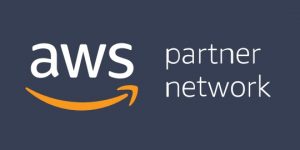AWS Foundational and Advanced Training
- Home
- Our Courses
- AWS Foundational and Advanced Training
AWS
AWS & DevOps Course Overview
The AWS training program is a six-month training designed to prepare IT career aspirants for four career options within the Cloud Space. Our training package prepares you for Solutions Architect, Cloud Engineer, DevOps Engineer and Security Architect/Engineer roles. The program is well tailored for those with little or no IT knowledge/experience. You will be trained from the basics of using your laptop and mature to a sophisticated Cloud professional!
In addition to the training, we prep you for interviews and work with you to develop a resume that outlines the skills you acquire during the training.
Further, the training equips you for the following certification exams:
1. AWS Solutions Architect Associate
2. AWS Solutions Architect Professional
3. AWS DevOps Engineer.
Our end-to-end training is offered at a discounted rate of $2500, with the option to pay by installment; starting with a deposit of $1000. The remaining balance to be paid in $500 monthly installments.
For a detailed curriculum and training schedule, please refer to our latest technology stack.
Course Prerequisites
You do not need to have an IT background to take this course as you will be guided step by step from the beginning through the end. All the necessary information will be provided during the duration of the course. Just need to have the hunger to succeed.
Laptop
Notebook
Passion
Flexible Schedule
Lifetime Access & Upgrade
24/7 Lifetime Support
Curriculum
AWS & DevOps Technology Stack
AWS Foundational Services
Compute
- Introduction
- Amazon Machine Images
- Amazon EC2 Families
- Amazon EC2 Pricing Options
- Amazon EC2 Autoscaling
- Elastic Load Balancing
- Lifecycle Manager
- Global Infrastructure & Reliability
- Storage
- Benefits of using AWS storage
- AWS storage benefits
- Cloud storage challenges
- Optimizing storage costs
- Comparing on-premises to cloud storage
- On-premises vs. cloud storage
- AWS cloud data storage
- Hybrid cloud storage
- Types of storage
- Overview of storage types
- Block-based storage and AWS block storage services
- File-based storage and AWS file storage services
- Object-based storage and AWS object storage services
- Hybrid storage and AWS Storage Gateway services
- Choosing an AWS storage service
- Data storage considerations
- Amazon backup services
- AWS Data Transfer options
- Overview of AWS migration and data transfer services
- Data transfer from on-prem to AWS cloud
- connections : Internet, AWS VPN and AWS Direct Connect
- Automating data transfers : AWS CLI and SDK’s
- Benefits of using AWS storage
- Networking
- Introduction
- Deploying a Basic VPC with One Subnet and an Internet Gateway
- Explanation of the design and components of a simple VPC
- Deployment and configuration of a simple VPC via the AWS Management
- Console or the AWS CLI
- Securing VPCs
- VPC access management via AWS Identity and Access Management (IAM)
- Network ACLs vs. security groups
- VPC security best practices
- The Basic HA VPC – Two Subnets in Two Availability Zones
- Making the simple VPC highly available by adding a second Availability Zone
- Adding an application load balancer to distribute traffic between two Availability Zones
- Production-Ready – The Three-Tier VPC
- Best practice: Limit exposure of resources
- Design pattern: Three-tier VPC architecture
- When to use a single-tier VPC or a three-tier/n-tier VPC
- Hands-On Lab: Build a three-tier VPC
- Amazon VPCs as Strategy
- Amazon VPC Corporate Data Centre Connectivity
- Virtual Private network (VPNs) using IPSec
- AWS Direct Connect
- AWS Direct Connect Gateway
- AWS Private Link
- Elastic Network Interface
- Layers of security used in an IT strategy
- Benefit of hybrid deployments
- Databases
- Database on AWS
- Relational Database
- Service (RDS)
- Backup and Monitoring
- Security and Compliance
- Security
- Introduction
- Overview
- On Premises and the AWS Cloud
- Security in the AWS Cloud
- AWS Well-Architected Framework
- Identity and Access Management
- Authentication vs. Authorization
- AWS Identity and Access Management (IAM) for Access Management
- Amazon Cognito for Mobile Authentication
- AWS Directory Service for User Federation
- Detective Controls
- Monitoring Overview
- Amazon GuardDuty for Threat Detection
- AWS Security Hub for Prioritizing Findings
- Amazon Macie for Data Monitoring
- Infrastructure Protection
- Securing Your Compute Resources
- AWS WAF for Traffic Filtering
- AWS Shield for DDoS Protection
- Data Protection
- Encryption on AWS
- AWS Key Management Service (AWS KMS) for Key Management
- AWS Certificate Manager (ACM) for Securing Communications
- AWS Secrets Manager for Credentials Management
- Incident Response
- Rethinking Incident Response
- AWS Config for Responding to Incidents
- Introduction
Cloud Orchestration / Automation
AWS CloudFormation
- Cloud Formation Introduction
- Parameters and Intrinsic Introduction
- Bootstrapping using userdata and cfn-init
- CloudFromation outputs and cross-stack Access
- CloudFormation Conditions
- Updating stacks (change set)
- Layering with nested stacks
- Depends on
- WaitCondition and WaitConditionHandle
- CreationPolicy
- Stack Policies
- Custom Resource Workflow
- Stacksets
- AWS CloudFormation Helper scripts ( cfn-init, cfn-hup, cfn-signal etc)
- AWS Lambda
- AWS Systems Manager
- Why automate?
- How to automate administration tasks at scale
- Collecting metrics for visibility
- Automating system healing and compliance
- Storing secrets and configuration data
- Managing configuration drift
- Interactive access with Session Manager
- Distributing software packages
- Centralizing actionable operational insights
- AWS Elastic Beanstalk
- Environment
- Version
- Customize
- AWS OPSWORK
- AWS OPSWORKS
- AWS OPSWORKS Stack & Chef
- Chef Recipes
- Architecting Serverless Solutions
- Event-Driven Architectures
- Thinking serverless
- Serverless event submission patterns
- Serverless data processing patterns
- Failure management in event-driven architectures
- Lab: Building Serverless Applications with an Event-Driven Architecture
- Serverless Application Architectures
- Migrating to serverless
- Choosing compute services and data stores
- Application architecture patterns
- Scaling Serverless Architectures
- Thinking serverless at scale
- Demo: AWS Lambda Power Tuning
- Scaling considerations for databases, orchestration, and streaming
- Testing for peak load
- Securing and Monitoring Serverless Applications
- Securing serverless architectures
- Monitoring and auditing serverless applications
- Demo: AWS X-Ray
- Lab: Troubleshooting Serverless Applications
- Serverless Deployments
- Understanding serverless deployments
- Sharing configuration data
- Automating the deployment pipeline
- API Gateway for serverless Applications
- AWS Lambda Function Security & Defence in Depth
- Event-Driven Architectures
- Ansible
- Introduction to Ansible
- Ansible installation
- Ansible Inventory
- Introduction to YAML
- Ansible Playbooks
- Ansible Modules
- Ansible Variables
- Conditionals
- Loops
- Ansible Roles
- Docker , ECS and EKS
- Microservices and Application Modernization
- Container concepts and constructs
- Container benefits and use cases
- Container services on AWS
- End-To-End container workloads on AWS
- Challenges of scaling microservice architectures at the enterprise level
- Terminology: Pod, Service, Deployment, Cluster
- Configure EKS to manage the Kubernetes management infrastructure
- Differentiate between AWS Fargate and EKS Managed Node Groups
- Scheduling options in EKS
- How pods communicate with each other and interact with hosts in EKS
- Access a Kubernetes cluster for monitoring and management
- Security on EKS
- Upgrades in EKS
- Continuous Integration, Delivery and Deployemnet on ECS
- Best Practices : Docker Images
- AWS CodeBuild
- Best Practices : Delivery and Deployment
- AWS CodeDeploy and CodePipeline
- Jenkins
- Introduction and Installation
- Getting started with Jenkins
- Jenkins & Docker
- Jenkins & AWS
- Jenkins & Ansible
- Jenkins & Security
- Jenkins & Maven
- Jenkins & Emails
- Jenkins & Git
- CI/CD
- Jenkins Pipeline –jenkinsfile
- CI/CD + Jenkins Pipeline + Docker + Maven
- Terraform
- Introduction to Terraform + Basics
- Terraform with AWS
- Advance Terraform usage
- Conditionals
- Built in Functions
- For & For Each Loops
- Terraform project structure
- Terraform lock file
- Manipulating State
- Terraform with Packer & Jenkins
- Terraform with Jenkins, ECR & ECS
- Kubernetes
- Programming Languages
- Bash
- JSON
- YAML
- Python
Governance and Compliance
Security Governance at scale
- Governance at Scale
- Challenges that customers face as they move through their cloud journeys
- Governance at scale focal points
- Challenges in the security governance area
- Lab 0: AWS Control Tower Setup Instructions
- Set up a landing zone
- Explore the AWS Cost Explorer dashboard
- Governance AutomationMulti-account strategies, guidance, and architecture
- Environments for agility and governance at scale
- Governance with AWS Control Tower
- Use cases for new and existing customers
- Lab 1: AWS Control Tower Basic Tasks
- Create an organizational unit (OU) and enable a guardrail
- Enroll a new AWS account using Account Factory
- Enroll an existing account
- Preventive Controls
- Enterprise environment challenges for developers
- AWS Service Catalog
- Resource creation
- Workflows for provisioning accounts
- Preventive cost and security governance
- Self-service with existing IT service management (ITSM) tools
- Lab 2: AWS Service Catalog Portfolios
- Share an administrator portfolio across all accounts in the organization
- Share an AWS Service Catalog portfolio from the management account
- Grant catalog access permissions to an AWS Single Sign-On user
- Detective Controls
- Operations aspect of governance at scale
- Resource monitoring
- Configuration rules for auditing
- Operational insights
- Remediation
- AWS Control Tower Customizations
- Set up the Customizations for Control Tower (CfCT) Solution
- Deploy the customisations for guardrails and roles
- Lab 4: AWS Control Tower Labs and Decommission Instruction
- Decommission resources
- Clean up accounts
- Bring It Together
- Engagement frameworks
- Requirements evaluation
- Case study for governance at scale
- Governance at Scale
Data Analytics
Data Analytics
- Market Opportunity
- Introduction
- Data as a strategic asset and differentiator
- Market opportunity for data analytics
- Data analytics challenges faced by businesses
- The data pipeline and Data Flywheel
- Data Analytics Solutions on AWS
- Customer journey to a modern data architecture
- Solution 1: Modernizing a data warehouse with Amazon Redshift
- Solution 2: Building a data lake
- Solution 3: Streaming and predictive analytics
- Solution 4: Addressing data governance
- AWS Data Analytics Portfolio
- Customer challenges and AWS opportunities
- AWS data analytics portfolio overview
- AWS value proposition
- Building a data analytics pipeline on AWS
- AWS Data Analytics Solutions – Part I
- AWS data migration options
- Solution 1: Modernizing a data warehouse with Amazon Redshift
- Solution 2: Data lakes
- Activity 1: Lab Demonstration – Serverless Data Lake Using AWS Glue, Amazon Athena, and Amazon QuickSight
- AWS Data Analytics Solutions – Part II
- Solution 3: Streaming and real-time analytics with Amazon Kinesis
- Solution 4: Data governance
- Solution 5: Insights and monetization with machine learning
- AWS Technical Engagement Strategies
- Technical engagement conversation using the Data Flywheel
- AWS six-phase strategy for implementing data analytics solutions
- AWS well-architected review using the Analytics Lens
- Proof of concept best practices
- Market Opportunity
AWS Security, Identity and Compliance
Security , Identity and Compliance
- Introduction
- Overview
- On Premises and the AWS Cloud
- Security in the AWS Cloud
- AWS Well-Architected Framework
- Identity and Access Management
- Authentication vs. Authorization
- AWS Identity and Access Management (IAM) for Access Management
- Amazon Cognito for Mobile Authentication
- AWS Directory Service for User Federation
- Detective Controls
- Monitoring Overview
- Amazon GuardDuty for Threat Detection
- AWS Security Hub for Prioritizing Findings
- Amazon Macie for Data Monitoring
- Infrastructure Protection
- Securing Your Compute Resources
- AWS WAF for Traffic Filtering
- AWS Shield for DDoS Protection
- Data Protection
- Encryption on AWS
- AWS Key Management Service (AWS KMS) for Key Management
- AWS Certificate Manager (ACM) for Securing Communications
- AWS Secrets Manager for Credentials Management
- Incident Response
- Rethinking Incident Response
- AWS Config for Responding to Incidents
- Introduction
Migrating to AWS
Migrating to AWS
- Assess
- Well-Architected Framework for migration
- Tools
- AWS Migration Methodology
- Business Case
- Mobilize
- AWS Application Discovery Service
- Migration strategies
- AWS Control Tower
- AWS management and governance
- Migrate
- Migrate servers with AWS Server Migration Service Migrate servers with CloudEndure (an AWS company)
- AWS Database Migration Service
- AWS Schema Conversion Tool
- Database migration
- VMware Cloud on AWS migration
- Services for data transfer
- Operations
- Operational services for migrations
- AWS Service Catalog
- AWS Service Catalog integrations
- Assess
Cost Transparency, Control, Forecasting and Optimization
- AWS Cost Explorer
- AWS Cost & Usage Report
- Consolidated billing for AWS
- Organizations
- AWS Purchase Order Management
- AWS Cost Anomaly Detection
- AWS Budgets
- Reserved Instances
- Savings Plans
- Amazon EC2 Spot Instances
- Amazon DynamoDB pricing
- AWS Instance Scheduler
- Amazon EC2 Auto Scaling
- AWS Trusted Advisor
- Right Sizing
- AWS Compute Optimizer
- Amazon S3 Intelligent-Tiering
AWS Technical Professional
- Introduction
- AWS Core Technologies
- This covers cloud computing fundamentals, the benefits of using the AWS Cloud, why AWS products and services are the right choice for customers, and the value of AWS core services to your customers.
- From Services to Solutions
- This covers architectural best practices,migration strategies, use cases and the Well- Architected Framework.
- Presenting AWS Solutions to Customers
- This covers discovery questioning and whiteboarding skills used in a mock presentation, also Proof of Concepts (PoC) and customer meeting best practices.
- Looking Ahead
- This covers implementation and modernization solutions, cost of the working solution, and optimizations made to be cost conscious for the customer
AWS Cloud Economics
- Introduction to Business Value
- Cloud Value Framework
- Cost savings
- Staff productivity
- Operational resilience
- Business agility
- Cost Savings Basics
- Why cost savings matters
- Lowering costs with AWS
- Customer migration challenges
- Staff Productivity
- Quantifying the impact AWS has on staff productivity versus traditional IT
- Customer examples
- Operational Resilience
- Four key areas of operational resilience
- Benefits of improved operational resilience
- Causes and impacts of downtime
- How AWS mitigates operational failures
- Customer examples
- Business Agility
- Key performance indicators to measure business agility
- How increased business agility allows for innovation and decreased risks and costs
- Customer examples
- Cloud Financial Management
- Four key areas of cloud financial management
- Measurement and accountability
- Cost optimization
- Planning and forecasting
- Cloud financial operations
- Introduction to Migration Portfolio Assessment (MPA)
- Who should use the MPA tool
- When and how to use the MPA tool
- How to access the MPA tool
- Cost Savings with MPA
- How to add and manipulate data with the MPA tool
AWS Business Professional
- AWS Value
- Explain cloud computing
- Identify the AWS value proposition
- Outline AWS products and services
- Identify the value of AWS services to customers
- Customer Engagement
- Explain your role in cloud adoption
- Define the cloud adoption journey
- Describe ways to handle customer objections
- Use engagement frameworks to guide customer conversations
- Describe client pricing
- AWS Products and Services Solutions
- Explain the purpose of AWS core services
- Apply AWS services to client use cases
- Explain how to position AWS services and solutions to clients
- Use objection-handling techniques
- Identify pricing tools for AWS services and solutions
- Go-to-Market Strategy
- Describe your business value
- Identify ways to promote your brand
- Identify ways to drive business demand
- Explain ways to grow your company with AWS
Application Delivery - SDLC Automation
- Understanding CI & CD
- Continuous Integration Goals
- Continuous delivery
- Continuous deployment goals
- Immutable infrastructure
- AWS Code services
- Options for source code management
- Branching off master AWS CodeBuild Intro
- Creating a Build Spec YAML file
- Jenkins as CI Server
- AWS CodeDeploy
- AppSpec file
- Understanding revisions
- AWS CodePipeline Intro
- AWS CodePipeline Actions
- Using AWS Lambda in a Pipeline
- Testing Pyramid ,Continuous Testing with IaC Testing Scenarios in a CI/CD Pipeline
- Best Practices for unit test
- Integration tests and unit tests
- Fault tolerance testing
- In-place deployments
- Rolling updates
- Rolling updates – canary
- Blue/green deployment
- Red-black deployment
- Immutable or disposal updates
- Application deployment strategies
Agile and Jira
- Overview of project management methodologies
- Overview of agile
- Overview of scrum
- Jira
- Confluence
Linux
Introduction to the command line
Managing physical storage
Install and configure software components and services
Monitor and manage running processes
Manage and secure files and file systems
Administer users and groups
Review the system log files and journal for issues
Troubleshoot problems and analyze systems with Red Hat Insights
Remotely manage systems with SSH
We are authorised partners of

Student Testimonials
The tutors at JJTech do not teach with assumptions that you have a prior knowledge of cloud. The materials were well simplified and provided me with detailed knowledge of the AWS ecosystem and other complementary technologies.
Aron
student - Concepts and content were easy to understandThe program exposed me to lots of hands-on experience with Tutors available for screens share to walk me through challenging simulations. The simulation used in the program were deduced from real world projects. This greatly enabled and prepared me for success on the job.
Mary Grey
student - Lots of hands-on experienceThis program did not only introduce me to the cloud; I was also taught other topics like Linux, python, Data Analytics and introduction to big data.
The program was very extensive into the core AWS services and also stretched out to cloud agnostic tools like Terraform, Ansible, Jenkins and other high demand tools.
Micheal
student - Lots of add-on topicsThis program extends beyond just a single cloud discipline. The course I was prepared to become a Solutions Architect, DevOps Engineer, AWS Engineer, AWS Security Specialist, Network Engineer and a lot more.
I feel confident to handle any role within the AWS space as well engage in deep dive conversation with anyone within and without the AWS arena.
Lucy
student - I was trained to become anything in the AWS spaceThe tutors are actual engineers and architects in the industry; so, the teaching is based on the everyday activities performed at their jobs. The tutors are also keeping up with the latest and greatest technologies introduced by AWS in real-time.
Very detailed notes and architectural diagrams are provided which are housed in google drive for access anytime.
Stephen
student - Excellent TutorsI joined this program with zero IT background. I didn’t fully believe in myself that I could become an IT expert. The tutors of this program embedded motivational words in the lessons which gave me the strength to carry on.
Today, I can proudly call myself an AWS Solutions Architect for renown fortune 500 company.
Derick
student - Motivating TutorsJJTech did not only support me during the timeframe of this program. I received support even after integrating into the industry. Resources were made available to me to ensure my success on the job.
JJTech does not only pride itself in excellent content delivery but also in ensuring that their alumnus gain employment and succeed on the job.
Emilia Clarke
Student - Post Program supportDuring this program, I had one on one meetings with tutors to understand my challenges and make recommendations for my success. Catch up classes were made available to fill up the gaps in my knowledge.
I felt like my success mattered to JJTech.
George
Student - Interest in my LearningCourse Duration and Enrollment Details
Upcoming Batch :
✅ AWS Training Start Date : Mar 21, 2024
✅ Enrolments End Date : Mar 21, 2024
✅ Duration: 6 months
✅ End-to-end training is offered at discounted rate : 2500 USD
✅ 1000 USD : Initial Deposit
✅ 500 USD : Every month
✅ One-time payment of 2000 USD only
All sales and payments are final – NO REFUNDS
faqs
Most Popular Questions
We help you see the world differently, discover opportunities you may never have imagined and achieve results that bridge what is with what can be.
What is the duration of the entire training/staff augmentation?
Six(6) Months
What are the days and time of the training?
Monday, Tuesday and Wednesday from 7pm to 11pm EST
How much do you charge for the training?
$2500 --> Instalment Mode
$2000 --> Lumpsum(Upfront)
Can I pay by installment or must I pay the entire amount as a lump sum?
While we encourage you to pay as a lump and focus on your training, we also give you the option to pay by installment as follows:
1st installment- before class starts =$1,000
2nd installment- 30 days after the first installment =$500
3rd installment- 30 days after the 2nd installment =$500
4th installment- 30 days after the 3rd installment =$500
$2000 --> Lumpsum(Upfront)
Is the amount negotiable?
No. The market rate for the programs we offer is $6,000. We already discounted that amount in an effort to make the program accessible to every serious AWS aspirant in our community.
Is the session virtual or in-person?
Our sessions are 100% live on zoom. We don’t currently do in-person sessions
Will I have someone to call when I have questions?
Yes, when you join JJ Tech Inc, you’re actually joining a family of IT professionals who are ready and willing to assist you in your journey to a cloud career. JJ Tech tutors, coaches and the entire alumnus are very happy to assist those who are serious in making this journey like they did.
Do I need to buy any textbooks?
Not required. JJ Tech will give you access to our Learning Management System where you have enormous amount of resources to help you navigate the training.
Do I need a desktop?
No. A laptop is recommended plus one or two additional monitors.
What is the difference between onboarding start date and technical start date?
Mar 22 , 2024
When is the deadline to enrol for the class?
Mar 22, 2024















